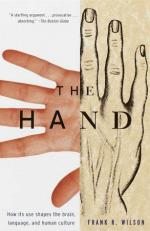
|
| Name: _________________________ | Period: ___________________ |
This quiz consists of 5 multiple choice and 5 short answer questions through Bad Boys, Polyliths, and the Heterotechnic Revolution.
Multiple Choice Questions
1. What is the critical significance of the paddle in Duchenne's model?
(a) It leaves one muscle group unbalanced.
(b) It allows for greater rotation.
(c) It leaves one muscle group balanced.
(d) It sends simultaneous signals that result in the interplay of movement.
2. What does Duchenne figure out how to demonstrate?
(a) The way a muscle contracts in order to push.
(b) The physiology of movement.
(c) The way an electrical charge stops movement.
(d) The way a muscle expands in order to pull.
3. What is one very important problem-solving strategy?
(a) Creating tribes.
(b) Farming.
(c) Organizing.
(d) Language.
4. What does Merlin Donald's theory of cultural and cognitive evolution propose?
(a) The groupings of tribes developed in a two-stage process.
(b) The human brain developed in a stop-and-go process.
(c) The human brain developed in a three-stage process.
(d) The human body developed in a three-stage process.
5. Who says that the hand and brain both speak to each other?
(a) Robertson Davies.
(b) Henry Plotkin.
(c) Frank Wilson.
(d) Merlin Donald.
Short Answer Questions
1. What does juggling as learned and performed by Percelly provide?
2. Who is Robin Dunbar?
3. According to Wilson, how many problem-solving strategies are there that stand out above all others?
4. Up until a certain point, what separated the human hand from that of the ape's hand?
5. According to Charles Sherrington, what are sensors to the target object?
|
This section contains 287 words (approx. 1 page at 300 words per page) |

|




